It's audacious of me to post in the Photography Lover's community. Taking pictures for me is an evolving skill. Keep in mind, please, that I lived most of my life in a time before cell phones were in common use.
I went to Europe twice and didn't take one picture. I got married and went on a honeymoon. Not one picture. My children, yes. They are immortalized in countless shots, but not taken by me. Then LMAC started the Picture Gallery and I pitched in with enthusiasm.
Now I never take a walk, or go for a drive, without my camera. At first it was a Kodak PixproFZ53. Then I graduated to a CoolPx 8500. All the pictures here were taken with the CoolPX, except the last (taken last year). That was taken with the Kodak, I believe.
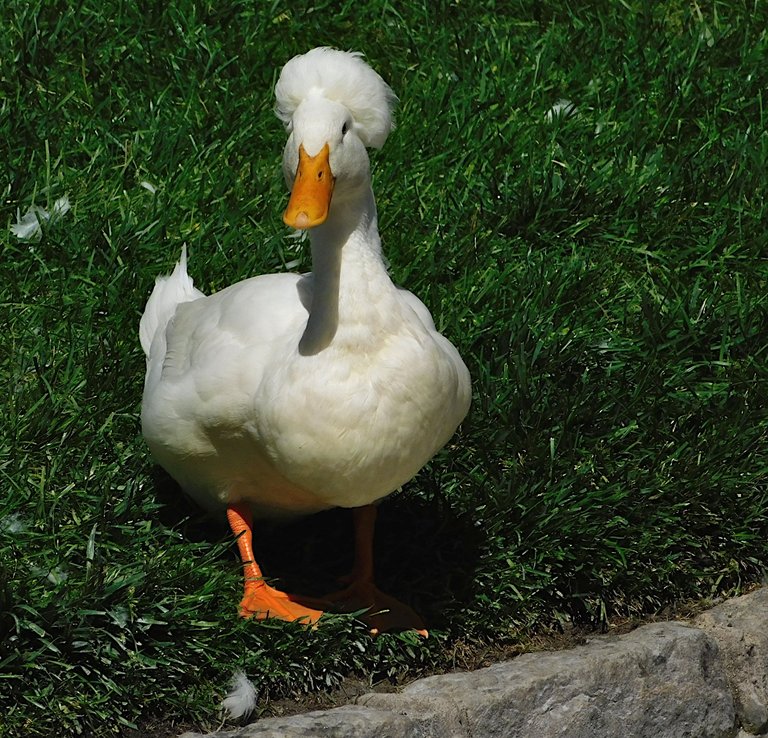
When I capture images of wildlife, such as those featured here, I go home afterwards and try to identify what I have seen. In this case all the animals are Pekin ducks. This duck is a heavy-bodied bird, so heavy in fact that it does not fly. The bird pictured above this paragraph is a crested Pekin duck.

I believe the others on the page are either American Pekin or German Pekin ducks. I can't tell the difference.
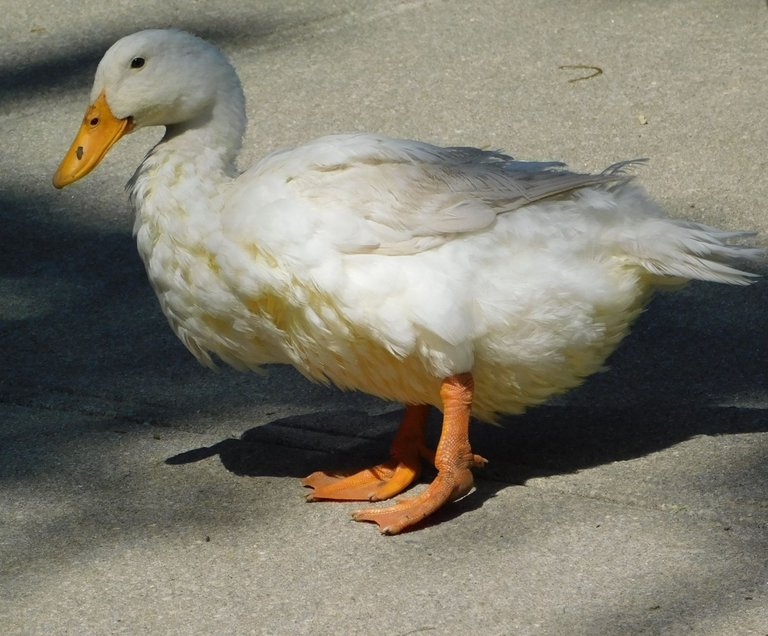
The Pekin duck breed was developed in nineteenth-century China. It was exported to Europe, and then to the U. S.
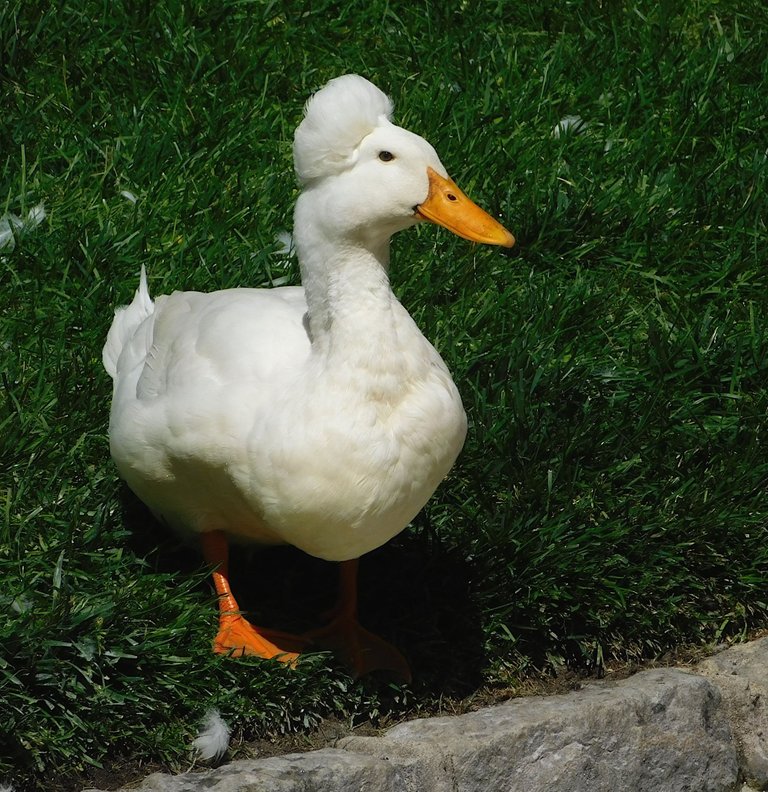
These pictures were taken in a community near my home. The ducks live in a pond that is surrounded by lush foliage. This is private property, we are reminded by signs all around (see the last picture in this series), but the ducks don't know that. They wander wherever they want.
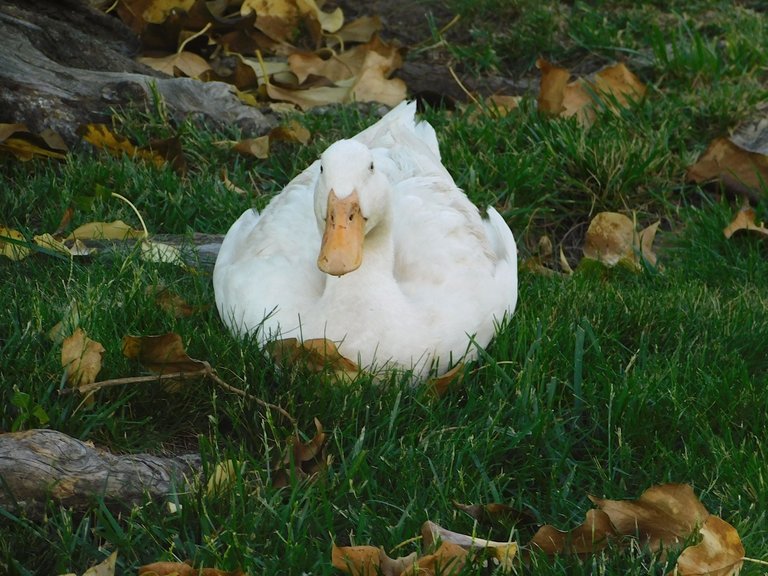
The duck featured above this paragraph didn't budge as I planted myself in the street and took this shot.
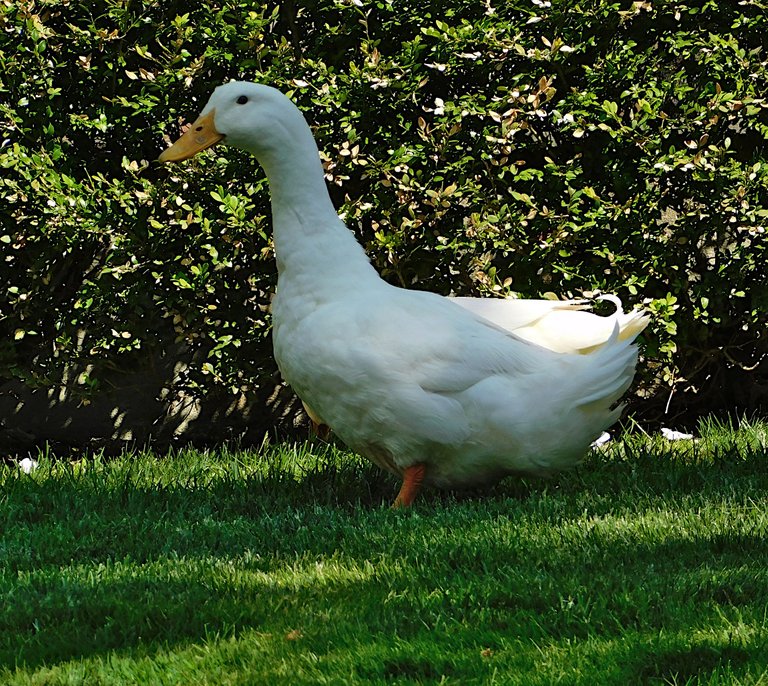
The yards and street of properties that neighbor the lush garden are playgrounds for the ducks, who seemed to be habituated to people. The ducks were mostly indifferent to our presence (my husband and I).
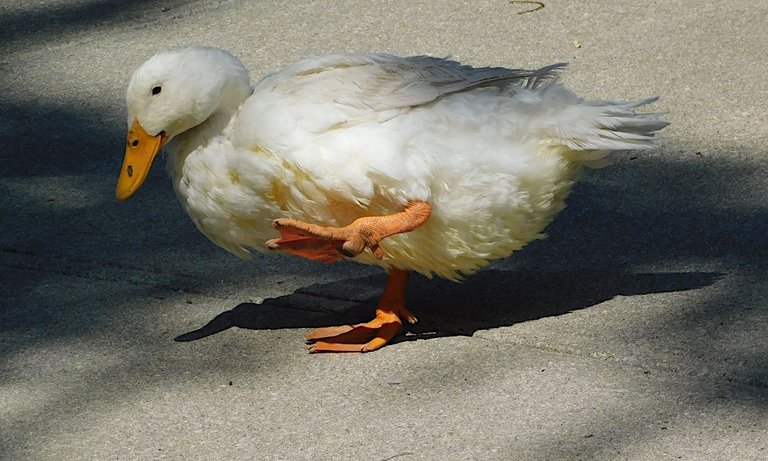
I caught the chubby fellow above midstep as it was progressing across the street. There seemed to be no awareness of cars. To be sure, there was very little traffic.
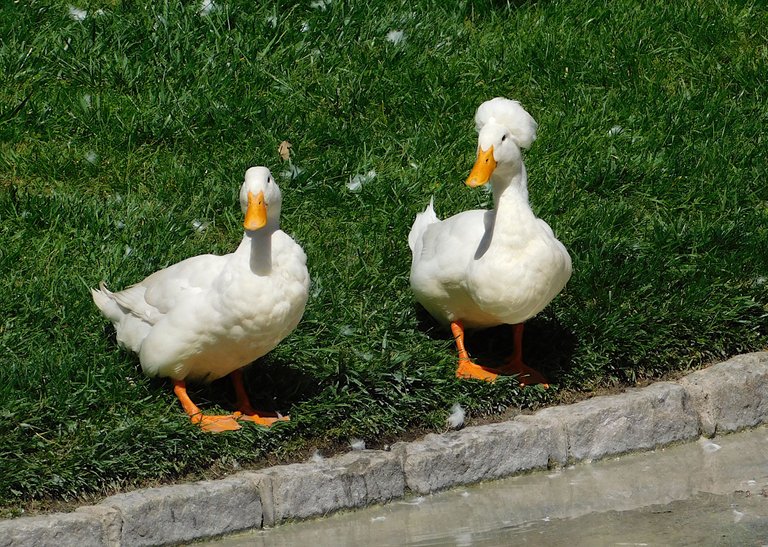
Pekin ducks are mildly dimorphic (males and females are physically distinct). The mature male will have a feather in its tale that curves up. This is called the drake feather.

Several of these ducks seem to have drake feathers, including the duck grooming itself in the picture above.
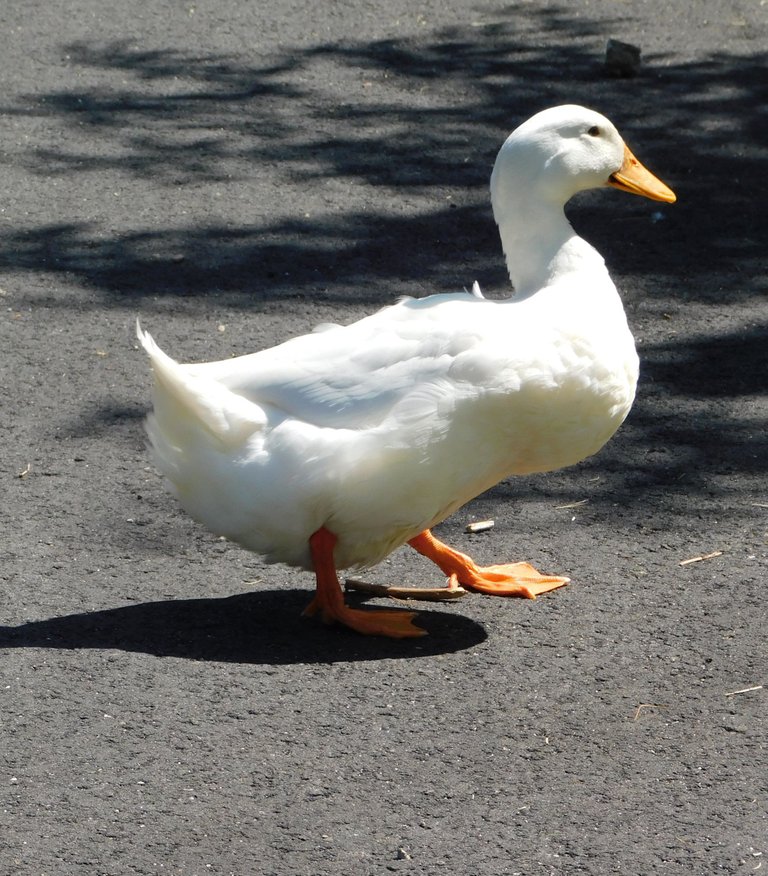
This duck certainly has a drake feather. Males are also said to have a deeper 'quack' than the females and can be distinguished by this sound. Also, they tend to be heavier.
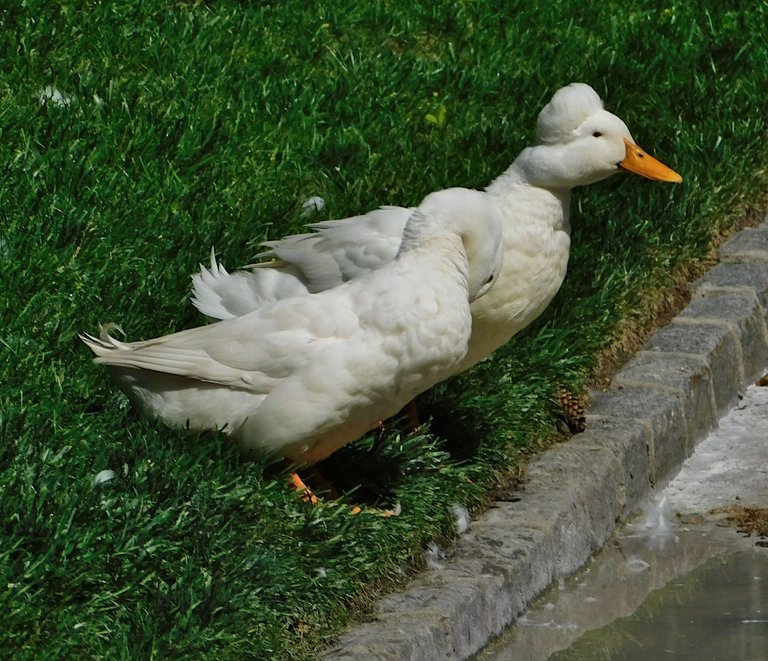
In the picture above, the crested duck appears to have the drake feather. The other duck, I'm not sure. Apparently, crested ducks should not mate with each other. The resulting offspring may not survive. However, different varieties of duck can generally interbreed.
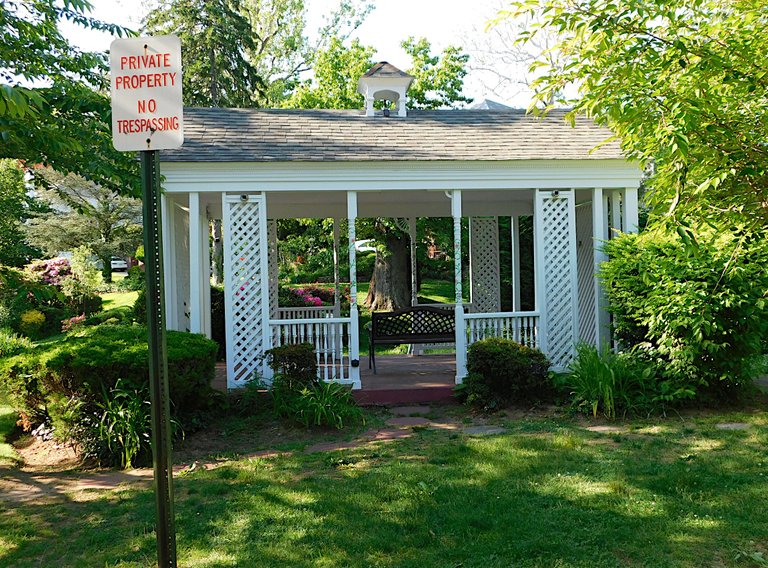
When I first visited this garden about a year ago I didn't realize the property was private and had the temerity to sit on the lovely bench featured in the picture above. On this visit to the ducks, I respected the boundaries defined by the sign.
I hope you have found my images to be attractive and the blog to be interesting. It was great fun taking these. Eventually most of these will be contributed to the LMAC Image Gallery (LIL), where they will be in the public domain.
